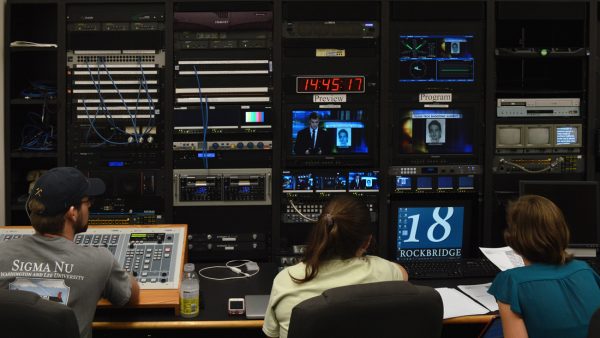Encanto – Disney’s magnum opus (but not Miranda’s)
“Encanto” is arguably Disney’s most well-made film to date but one of the least grossing
February 1, 2022
Disney’s “Encanto” met with a disappointing box office, ranking far behind household-favorite films like “Frozen” and even a majority of recent live-action remakes. But arguably, this has been one of their most thoughtful film creations to date.
“Encanto” focuses largely on the Madrigal family who act as the epicenter of their community with their magical house, the Casita. Magic is naturally imbued in the seemingly anthropomorphic house with each family member possessing a power. Mirabel is the lone duck without a magical power of her own, which serves as a point of contention between her and her family. However, this is one of the most moving dynamics of the entire film: the motif of family.
Mirabel is the youngest of three sisters. Isabele, the oldest, is “perfect” and has the power of blooming flowers; following her is Luisa who has super strength and is seen as the most capable. This dynamic of three is seldom explored within films, yet within the psychology world it holds a lot of importance in forming sibling roles.
The movie explores each sister’s pressures and anxieties in the role that they play. Isabele is the face of the family as shown with her marriage subplot. However, her song “What Else Can I Do,” explores the confinement she feels in being perpetually pretty and poised, almost as if she’s been idealized akin to a manic-pixie-girl. Being the older sibling of two brothers, the expectation of perfection and precision (so that they could have a copybook for their lives) has been drilled into me since day one. There is – or at least was – nothing that scared me more than letting myself down. By disappointing myself, I would be disappointing the entire legacy of my brothers. And I’m confident that this strain is universally recognized by other first-borns.
Luisa, meanwhile, offers her strength to repair the infrastructure and help the townspeople, but when she loses this strength she loses her identity. Her song “Surface Pressure,” though arguably tainted by Lin-Manuel Miranda’s signature motif of trop-modernized beats and cadences, feels that she “[carries] all the burdens and never [complains].” This kind of visualization of family and sibling dynamics is barely explored within films at all, let alone Disney films. So, watching as a child of any sort of sibling position evokes a complex empathy that goes beyond simple pity. You really understand the emotion and rationale of these characters.
One other point to applaud is the range of accurate – big emphasis on accurate – Latin representation, especially that of Colombia. The directors Jared Bush and Byron Howard spent delicate time and effort researching Latin American culture, traveling to Colombia to study the architecture and talk to its people. The pay-off is noticeable in the small details. The film hints at a war in the beginning that the Mirabal family flees from. It’s lost on Western audiences, however, it’s an important inclusion of the Thousand Days’ War, a civil war that broke out between the liberal and conservative parties of the country. Also, the range of physical representations of the Mirabel family and townspeople in shades and hair is unprecedented. You can see the importance of this inclusion in TikTok or Youtube shorts of children staring up to characters in the movie that they relate to – this is the first time that they’re seeing themselves in the films that they are exposed to.
The most prevalent – even pernicious, insidious – sound throughout the musical movie is Lin-Manuel Miranda’s voice. Having written and composed nearly all of the songs, his style within the movie is entirely obvious, bridging on comical. I couldn’t stop myself from laughing during “Surface Pressure.” It was the beat drop in the chorus, coming from out of the blue around the corner. It sounds even unseemly for a Disney movie. Miranda’s sounds are prominent currently with his other recent work “Tick Tock Boom” so it’s easy to hear the similarities he takes in his compositions. For example, he takes the same layering of lyric motifs in “Therapy” and “We Don’t Talk About Bruno,” both of which became viral because of that reason. He shows that his creativity is not stuck in the box that is “Hamilton,” but as a trade-off, he reveals his age through his random beat drops; he’s obviously close friends with DJ Khaled.
But thankfully, his music doesn’t detach from the vibrancy of “Encanto ‘’ and meaningfully adds to the plot and characters. Disney did not miss this one and has shown that it can modernize, creating fairy tales for the present day.












